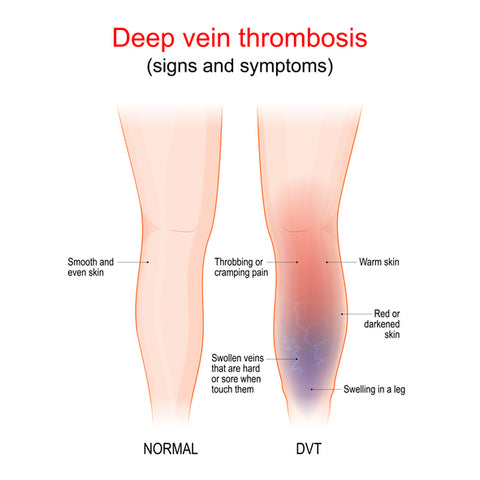Your Cart is Empty
FREE SHIPPING ON ORDERS OVER $20 - FREE HEALTHY SNACK WITH EVERY PURCHASE
Our site uses cookies. By using our site, you agree to our use of cookies. Privacy Policy
Menu
-
- Health Conditions
- Maximum Performance
- Accessories & Gear
- Altitude Training
- Athlete Overtraining Syndrome
- Core Strength
- Dangers of NSAIDS
- Detox / Cleanse
- Endurance Nutrition & Supplementation
- Energy Boosting
- Exercise & Immunity
- Flexibility
- Hydration
- Hypoglycemia / Bonking
- Hyponatremia
- Immunity Support
- Lab Testing
- Muscle Building
- Recovery
- Sports Drinks
- Package Bundles
- Adrenal Support
- Healthy Aging
- Athletic Performance
- Blood Sugar Balance
- Bone Support
- Daily Nutrition Essentials
- Daily Wellness
- Energy Support
- Fat Loss Support Bundle
- Female Fertility Bundle
- Female Hormone Balance
- Gut Health
- Heart Health
- Immunity Boosters
- Inflammation Control
- Injury Repair
- Joint Support
- Liver Support
- Menopause Support
- Men's Wellness
- Mood Lift
- Muscle Cramp Relief
- Muscle Builder
- Recovery
- Safe Travels
- Sleep Enhancers
- Stress Relief
- Thyroid Support
- Brands
- Blog
-
- Login

FREE SHIPPING ON ORDERS OVER $20 - FREE HEALTHY SNACK WITH EVERY PURCHASE
Our site uses cookies. By using our site, you agree to our use of cookies. Privacy Policy
DVT - Deep Vein Thrombosis
Deep Vein Thrombosis (DVT) is a medical condition characterized by the formation of a blood clot (thrombus) in one of the deep veins of the body, typically in the lower leg, thighs or pelvis.
Blood Clots are explained in further detail here.
DVT usually occurs in the veins located deep within the lower leg, thighs or pelvis muscles and tissues. Veins drain blood away from an area and these type of clots are usually painful (but not always!) and can lead to swelling, skin discoloration and may travel to other areas of the body. If left untreated, the clot can break loose and travel through the bloodstream, potentially causing serious complications like a pulmonary embolism (PE), where the clot lodges in the lungs so early detection and management are crucial.
DVT Causes:
DVT is caused by a combination of factors, commonly referred to as Virchow's Triad:
- Stasis of blood flow: Reduced blood flow due to immobility or prolonged periods of inactivity, such as during long flights or bed rest, can contribute to clot formation.
- Endothelial injury: Damage to the inner lining of the blood vessels, often due to surgery, trauma, or certain medical conditions, can create a surface that promotes clot formation.
- Hypercoagulability: Conditions that increase the clotting tendencies of the blood, such as genetic predisposition, hormonal changes (like pregnancy or birth control pills), and certain medical conditions (like cancer), can lead to the formation of clots.
DVT Symptoms:
Common symptoms of DVT include swelling, pain, warmth, redness, tenderness and visibly prominent veins in the affected leg. However, some cases might not show any noticeable symptoms, making diagnosis challenging.

If you suspect you have a blood clot, emergency treatment is always required! In medicine we speak of “The 5 most dangerous words” and those are: ‘Maybe It Will Go Away’ - this is especially true when it comes to blood clots - they rarly go away on their own, nor without significant medical intervention.
It never hurts to get checked out (sooner rather than later) if you have new or different symptoms of any kind. In the case of clots, they can be life threatening so it’s even more important to be seen.
In the event of emergency treatment for blood clots, a combination of blood thinners, thrombolytics (drugs that break up clots) and surgery may be used depending on the type and location of the clot.
DVT Prevention:
First, the basics - these go without saying but we’re going to anyway: Don’t smoke, maintain a healthy weight and stay active especially during long periods of sitting or immobility and follow your doctor's recommendations if you have risk factors for DVT.
Going forward there are a natural medicines that can help minimize inflammation and the tendency to clot; these include:
-
Fish Oil
The omega-3 fats contained in fish oils are perhaps some of the most potent natural-anticoagulants (blood thinners) around. Omega-3’s help prevent blood clots by making platelets (the cells in your blood that lead the formation of clotting) less sticky, so to speak. Keep in mind fish oil or the other items we mention don’t actually make your blood ‘thinner’; this is just a phrase that’s commonly used to describe the prevention of clotting. -
Systemic Enzymes
Enzymes are specialized proteins that our bodies make to help speed up or change the thousands of different chemical reactions that go on. One group of enzymes (known as proteolytic enzymes) can help minimize blood clotting by clearing excess fibrin (a clotting chemical) from the blood and also by reducing the ‘stickiness’ of platelets. For the purpose of keeping the blood less prone to clots, it’s important to take them on an empty stomach - otherwise the enzymes will be used trying to digest the food in your belly, other than being absorbed into the bloodstream. - Turmeric: Curcumin, the active compound in turmeric, has anti-inflammatory properties and might help with blood circulation and clot prevention.
- Ginger, cinnamon, cayenne peppers, and garlic are all natural blood thinners. Adding these into your diet will help keep your blood from clotting as easily. Eating them in regular amounts is perfectly ok, but if you also happen to be on blood-thinning medications it’s a good idea to at least check in with your doctor and see how adding these foods into your diet increases your ability to clot. More isn’t always better, but adding these in for most of us will only help to minimize the chances of clotting.
Lastly, keep moving after your workouts! For many people the tendency is to get home, eat and then flop down on the couch and rest. We’ve known a handful of athletes over the years who’ve done this and wound up with a DVT. Also, be aware if you’ve had a heavy training cycle and then wind up on an airplane - this is also where a lot of blood clots occur just due to the nature of sitting in a cramped seat for several hours. Even the fittest among us can get a clot from sitting!
So, get home after your workout, get some food and then don’t just lay around for the next few hours. Try to keep moving, and or if you do sit down for a spell be sure to flex your feet - this will keep the blood moving even when you aren’t. You can do the same on a plane - flex your feet back and forth and of course get up when you can.
Remember that while these natural supplements and lifestyle changes might have potential benefits, they are not a substitute for medical advice and proper management of risk factors. If you are at risk for DVT or have a history of blood clots, consult a healthcare professional before making any significant changes to your diet or supplement regimen. They can provide personalized guidance based on your medical history and needs.
{"statementLink":"","footerHtml":"","hideMobile":false,"hideTrigger":false,"disableBgProcess":false,"language":"en","position":"left","leadColor":"#146ff8","triggerColor":"#146ff8","triggerRadius":"50%","triggerPositionX":"right","triggerPositionY":"bottom","triggerIcon":"wheels","triggerSize":"medium","triggerOffsetX":20,"triggerOffsetY":20,"mobile":{"triggerSize":"small","triggerPositionX":"right","triggerPositionY":"bottom","triggerOffsetX":10,"triggerOffsetY":10,"triggerRadius":"50%"}}












